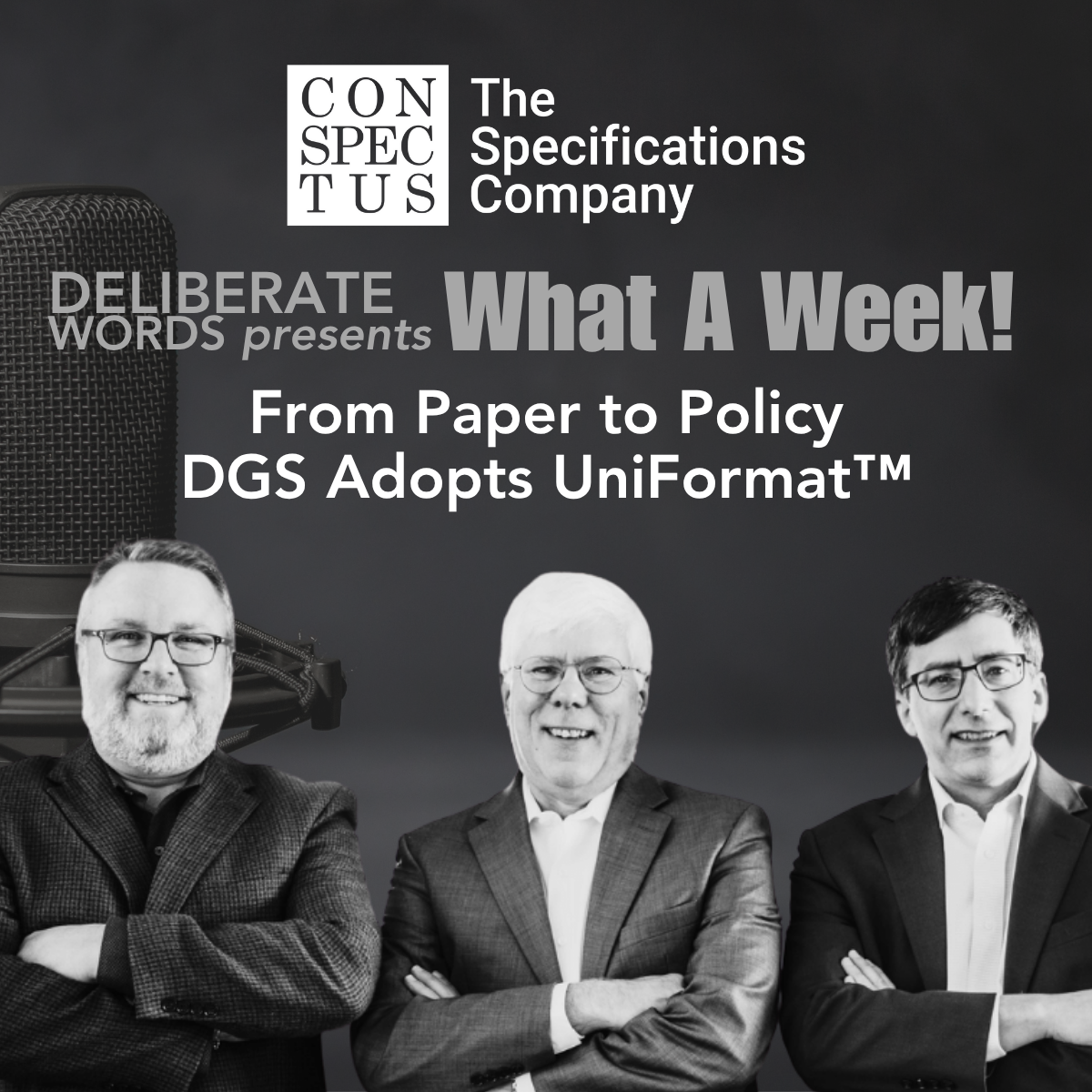1 min read
What A Week! | From Paper to Policy, DGS Adopts UniFormat
![]() Elias Saltz, Steve Gantner, David Stutzman
October 6, 2025 at 12:34 PM
Elias Saltz, Steve Gantner, David Stutzman
October 6, 2025 at 12:34 PM

Dave Stutzman and Elias Saltz unpack a full-circle moment for Conspectus and the broader specification community — how the Pennsylvania Department of General Services (DGS) has officially adopted a UniFormat-based Project Design Criteria requirement, seemingly inspired by Conspectus’ paper Evolving Specifications.
The Surprise from DGS
Dave shares the backstory: after presenting to DGS in 2024 about Uniformat and sharing Evolving Specifications, he recently discovered that DGS now mandates architects to submit Project Design Criteria documents organized by Uniformat — language and structure closely mirroring the Conspectus approach.
UniFormat™ as the Common Language
Dave and Elias dive into why this is a smart move:
- UniFormat aligns perfectly with Revit/BIM assemblies and estimators’ frameworks, creating one-to-one consistency between model, description, and cost.
- The system encourages early, structured documentation that can evolve throughout the design process, leading to better-informed cost analysis and decision management.
Alternates, Value Engineering, and Smarter Budgeting
DGS’s policy also introduces a structured method for alternates, requiring three cost-reduction options at 5% each. Dave critiques the rigidity of forcing alternates in order, suggesting a more strategic approach:
“Why not price viable options early, balance the budget, and eliminate the need for alternates altogether?”
He references independent estimator Marcine Taylor, who once delivered a hospital project within 2% of her eight-year-old estimate — proof that disciplined, early cost alignment works.
The Role of Conceptual Estimators
Elias and Dave stress that subcontractors often price what’s drawn, while conceptual estimators price what’s needed. Engaging estimators from the start helps owners and architects make realistic budget decisions — and reduces the endless value-engineering loop.
From Design Criteria to OPR
The hosts envision DGS’s design criteria as a proto-Owner’s Project Requirements (OPR) — a living foundation for scope, cost, and performance. Over time, this could evolve into a powerful database for cost benchmarking and assembly-level decisions across project types.
A Win for Clarity and Collaboration
Ultimately, DGS’s adoption of UniFormat isn’t just a technical change — it’s a validation of transparent, data-driven specification practices.
Dave applauds the department for “formally adopting a process that defines intent and criteria early — not as a throwaway outline, but as the backbone of design documentation.”
Conspectus already delivers this kind of document daily — and we’re ready to help bring that experience directly to DGS projects.
Key Takeaway
Early alignment between design, cost, and intent eliminates chaos later.
Uniformat isn’t just a framework — it’s a roadmap to smarter, more predictable building outcomes.
